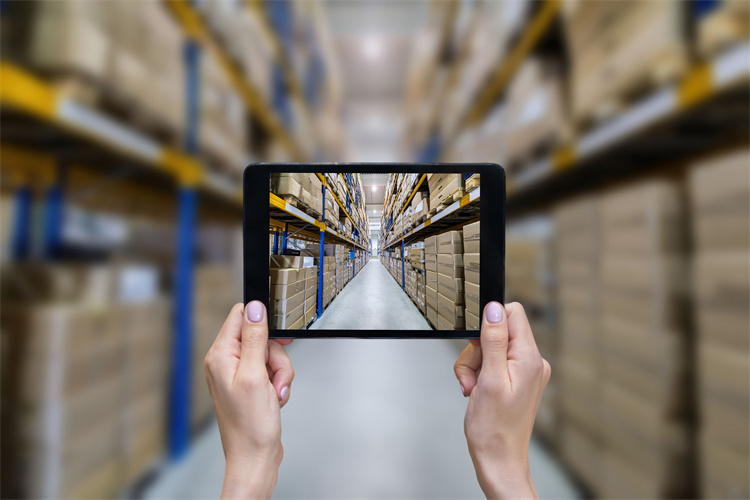Top Trends in Big Data Analytics for Logistics in 2025

Big data has revolutionized the logistics industry, enabling smarter operations and real-time insights. Companies now identify bottlenecks and optimize supply chains with precision. Since the pandemic, adoption has surged, with 79% of Chief Supply Chain Officers prioritizing analytics training. This shift drives efficiency, enhances customer experiences, and redefines logistics in 2025.
Key Takeaways
Big data helps logistics work better by predicting demand and tracking in real-time. This saves money and makes customers happier.
AI-powered tools will lead logistics choices by 2025. They help companies automate tasks and handle supply chain problems fast.
Green analytics lowers harm to the environment by finding better routes and managing fleets well. This supports eco-friendly plans.
Big Data Analytics in the Logistics Industry
The role of Big Data in modern supply chain operations
Big data plays a crucial role in transforming how you manage supply chain operations. It enables you to make informed decisions by analyzing vast amounts of data from multiple sources. For example, you can use historical data to forecast demand more accurately, ensuring that your inventory aligns with customer needs. Real-time data provides visibility across the supply chain, helping you monitor operations and detect issues early. By analyzing external factors, such as weather or geopolitical events, you can prepare for potential disruptions and build a more resilient supply chain. Companies like FedEx and DHL already use big data to optimize delivery routes and improve efficiency.
Key applications of data analytics in logistics
Data analytics has become a cornerstone of the logistics industry. It helps you streamline operations and enhance customer satisfaction. Here are some key applications:
Enhanced demand forecasting improves your ability to predict market trends.
Real-time tracking allows you to adjust delivery routes dynamically.
Inventory optimization reduces holding costs by aligning stock levels with actual demand.
Risk management tools help you identify and mitigate potential disruptions.
Personalized customer experiences increase loyalty by tailoring services to individual preferences.
Companies like Deutsche Bahn use predictive maintenance to keep their operations running smoothly, while Amazon leverages data analytics to ensure timely deliveries.
How JUSDA leverages Big Data for supply chain optimization
JUSDA uses big data to provide intelligent supply chain solutions tailored to your business needs. Its JusLink platform integrates AI, IoT, and cloud computing to offer real-time visibility and collaboration. With tools like AI-driven sales forecasting and intelligent risk management, JusLink helps you predict demand, optimize inventory, and respond swiftly to disruptions. The platform’s microservices architecture allows you to customize features, ensuring flexibility and scalability. By adopting JUSDA’s solutions, you can enhance efficiency, reduce costs, and gain a competitive edge in the logistics industry.
Key Trends in Big Data Analytics for Logistics in 2025

AI-driven analytics for smarter logistics decision-making
AI-driven analytics is transforming how you make decisions in the logistics industry. By 2025, 60% of analytics platforms will enable decision intelligence, allowing you to make data-driven choices with greater precision. AI integrates with business intelligence to optimize logistics functions like last-mile delivery and route planning. Generative AI democratizes data creation, enabling more stakeholders to contribute insights. You can also automate warehouse management and supply chain operations, reducing manual effort and improving efficiency. These advancements help you monitor supply chains, identify real-time issues, and adapt quickly to prevent costly delays.
Real-time data processing for operational efficiency
Real-time data processing gives you instantaneous insights into supply chain activities. This allows you to adjust shipment routes dynamically, ensuring timely deliveries and reducing operational costs. Continuous inventory monitoring prevents stockouts and overstocking, improving cash flow and reducing waste. Real-time analysis also enhances your ability to respond to market changes or disruptions, keeping operations efficient. Dynamic route optimization and better resource management ensure that your transportation processes remain smooth and cost-effective.
Predictive analytics for demand forecasting and risk management
Predictive analytics helps you anticipate demand and manage risks effectively. By integrating real-time and external data, you can forecast demand with enhanced accuracy. This minimizes inventory holding costs and reduces wastage, saving on fuel, storage, and labor. Predictive analytics also ensures timely delivery and product availability, improving customer satisfaction. The actionable insights you gain enable strategic decision-making for expansion and investment. For example, you can use prescriptive analytics to refine your supply chain strategies based on demand patterns.
Benefit | Description |
|---|---|
Enhanced Accuracy in Demand Prediction | Integrates real-time and external data for better demand forecasting, capturing fluctuations effectively. |
Reduced Operational Costs | Minimizes inventory holding costs and reduces wastage, leading to savings in fuel, storage, and labor. |
Improved Customer Satisfaction | Ensures timely delivery and product availability, increasing customer satisfaction. |
Strategic Decision-Making | Provides actionable insights for expansion, investment, and risk management based on demand patterns. |
Sustainability-focused analytics for greener supply chains
Sustainability-focused analytics helps you reduce your environmental impact. Route optimization minimizes mileage and traffic congestion. Predictive systems improve vehicle efficiency and reduce emissions. You can also evaluate eco-friendly vehicles and optimize fleet performance. Load balancing ensures maximum payload capacity, reducing unnecessary trips. By predicting transportation demand, you can adjust fleet size and avoid excess emissions. These tools align your supply chain with sustainability goals, making operations greener and more efficient.
Blockchain integration for secure and transparent logistics data
Blockchain technology enhances transparency and security in your logistics operations. It provides a decentralized, immutable ledger for real-time tracking of goods. This ensures that all stakeholders have access to a single source of truth, improving collaboration. Blockchain automates processes, reducing paperwork and speeding up operations. You can also track the origin of goods, ensuring compliance with regulations. These features make blockchain a valuable tool for managing logistics data securely and efficiently.
Benefits of Big Data Trends for the Logistics Industry

Enhanced efficiency and cost savings in supply chain operations
Big data analytics helps you achieve significant cost savings and operational efficiency in supply chain processes. By using predictive analytics, you can forecast demand more accurately, reducing inventory holding costs by up to 20%. Companies leveraging data analytics have reported a 20-25% reduction in operational costs. For example, Amazon has increased its overall efficiency by 30% through advanced analytics. Real-time data processing allows you to optimize transportation routes and warehouse management, cutting unnecessary expenses and improving resource allocation. These tools ensure that your supply chain operates smoothly and cost-effectively.
Improved customer experience through data-driven insights
Data-driven insights transform how you interact with customers. By analyzing customer preferences, you can tailor services to meet their needs. Proactive communication keeps customers informed about their shipments, enhancing trust. Real-time tracking provides precise updates on package locations, reducing anxiety over delays. Predictive analytics ensures that products are available when needed, improving satisfaction. Personalized delivery options and recommendations further boost loyalty. These strategies create a seamless customer experience, strengthening your brand’s reputation in the logistics industry.
Greater transparency and trust in logistics processes
Big data analytics enhances transparency across supply chains. Real-time monitoring of goods’ movement, combined with GPS tracking, allows you to plan deliveries effectively. Up-to-date tracking information fosters trust among customers and stakeholders. Dynamic alerts help you identify potential issues quickly, ensuring timely communication and resolution. Improved communication elevates customer experiences and strengthens your brand image. By integrating these tools, you can build a transparent and reliable logistics network.
Contribution to sustainability goals and reduced environmental impact
Sustainability-focused analytics helps you align your operations with environmental goals. Route optimization minimizes fuel consumption and emissions. Predictive systems improve vehicle efficiency and reduce unnecessary trips. Load balancing ensures maximum payload capacity, cutting down on transportation waste. By forecasting demand accurately, you can adjust fleet sizes and avoid excess emissions. These practices make your supply chain greener while maintaining efficiency. Sustainability-focused analytics not only reduces your environmental footprint but also enhances your brand’s appeal to eco-conscious customers.
Challenges and Solutions in Adopting Big Data Analytics
Addressing data privacy and security concerns
Data privacy and security remain critical challenges in logistics analytics. Protecting sensitive information, such as customer data, requires robust measures. Cyber-attacks often target IT systems, where valuable data is stored. In fact, data-related threats account for 30% of cyber-attacks in the transportation sector, affecting credentials and personal information. To address these risks, you can implement anonymization techniques like differential privacy and k-anonymity. These methods protect personally identifiable information while maintaining data utility. Obtaining informed consent and ensuring transparency about data usage also build trust and comply with regulations. Cross-border data transfers require adherence to frameworks like the EU-US Privacy Shield to navigate differing international laws effectively.
Overcoming high implementation costs and resource barriers
High implementation costs can deter you from adopting advanced analytics solutions. However, strategic investments can help you manage expenses. For instance, selecting scalable technologies tailored to your logistics needs ensures cost-effectiveness. Promoting a data-driven culture within your organization encourages efficient use of resources. Regularly monitoring analytics processes and refining them based on performance metrics further optimizes costs. The table below outlines strategies to overcome these barriers:
Strategy | Description |
|---|---|
Investing in the Right Technology | Choose advanced platforms and scalable solutions that meet specific logistics needs. |
Building a Data-Driven Culture | Promote data literacy and encourage data-driven decision-making. |
Continuous Monitoring and Improvement | Assess processes regularly and implement improvements based on insights. |
Bridging skill gaps with workforce upskilling
Upskilling your workforce is essential for handling big data effectively. Training programs for existing employees equip them with the necessary skills. Cloud-based platforms simplify data analysis with user-friendly interfaces, making it easier for your team to adapt. Leveraging AI-powered tools reduces the complexity of analytics tasks, enabling your workforce to focus on strategic decision-making. These methods ensure your team remains competent in managing modern supply chain challenges.
Solutions: Leveraging platforms like JusLink for scalable adoption
Platforms like JusLink offer scalable solutions to simplify big data adoption. JusLink integrates AI, IoT, and cloud computing to provide real-time insights and collaboration. Its intelligent risk management system monitors supply chain risks and offers timely alerts. The platform’s microservices architecture allows you to customize features based on your business needs. By adopting JusLink, you can streamline operations, reduce costs, and enhance efficiency without overburdening your resources.
Future Outlook for Big Data in the Logistics Industry
The role of emerging technologies in shaping logistics
Emerging technologies like IoT and 5G are revolutionizing the logistics industry. IoT sensors combined with 5G connectivity enable real-time monitoring, giving you full visibility into your supply chain. These advancements automate tasks such as updating ETAs and tracking shipments, improving operational efficiency. Enhanced transparency also helps you meet regulatory requirements for emissions tracking and safety compliance.
Aspect | Impact |
|---|---|
Real-time Monitoring | Advanced due to IoT sensors and 5G connectivity, enabling full visibility into logistics. |
Operational Efficiency | Automation of manual tasks like updating ETAs through live tracking. |
Transparency | Enhanced to meet regulatory requirements for emissions tracking and safety compliance. |
5G supports up to 1 million IoT devices per square kilometer, creating interconnected ecosystems. Smart factories use IoT to monitor equipment and optimize production processes. These technologies allow real-time adjustments, reducing waste and boosting productivity.
The increasing importance of data-driven innovation
Data-driven innovation is reshaping logistics by addressing challenges in cost, efficiency, and transparency. Predictive analytics optimizes routes by integrating diverse data types, helping you make better decisions. Widespread sensor use increases transparency, benefiting shippers, carriers, and customers. Automation in warehouses and supply chains, powered by IoT and data analytics, enhances operational efficiency.
You can also improve last-mile delivery by leveraging data insights to address time-sensitive operations. For perishable goods, priority shipping becomes more reliable with better data integration. These innovations ensure your logistics operations remain competitive in a rapidly evolving market.
Predictions for the supply chain in a data-centric world
By 2025, data will dominate supply chain operations. AI will provide end-to-end visibility, enabling faster decision-making. Agentic AI will enhance agility, helping you adapt to disruptions. Cybersecurity and data governance will become critical as digital supply chains expand.
AI will become essential for supply chain operations, offering real-time insights.
Agentic AI will improve resilience in supply chain execution.
Cybersecurity measures will gain priority to protect sensitive data.
Successful supply chains will focus on traceability, resilience, and sustainability. Companies that embrace real-time data and alternative sourcing will navigate global commerce complexities more effectively.

After the update
Supply Chain Management Solution
Big data analytics is reshaping logistics with trends like supply chain automation, data-driven decision making, and integrated analytics. These innovations streamline operations, enhance transparency, and improve customer satisfaction. Adopting these trends ensures you stay competitive in a rapidly evolving market. JUSDA and JusLink lead this transformation by offering cutting-edge solutions that optimize your supply chain and drive efficiency.
See Also
Best Logistics Programs to Explore in 2024
Understanding Current Trends in Logistics Risk Management
How Big Data and Machine Learning Transform Supply Chains
